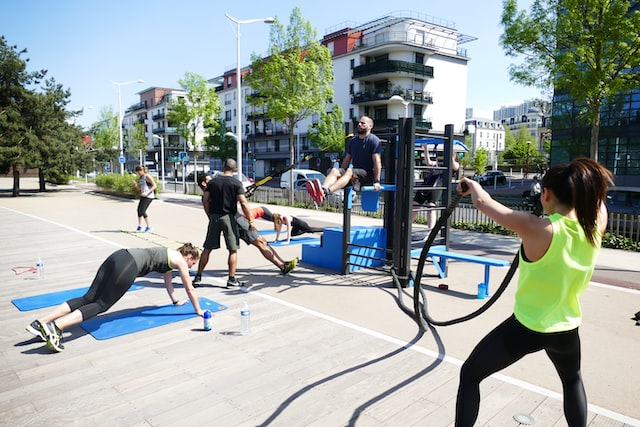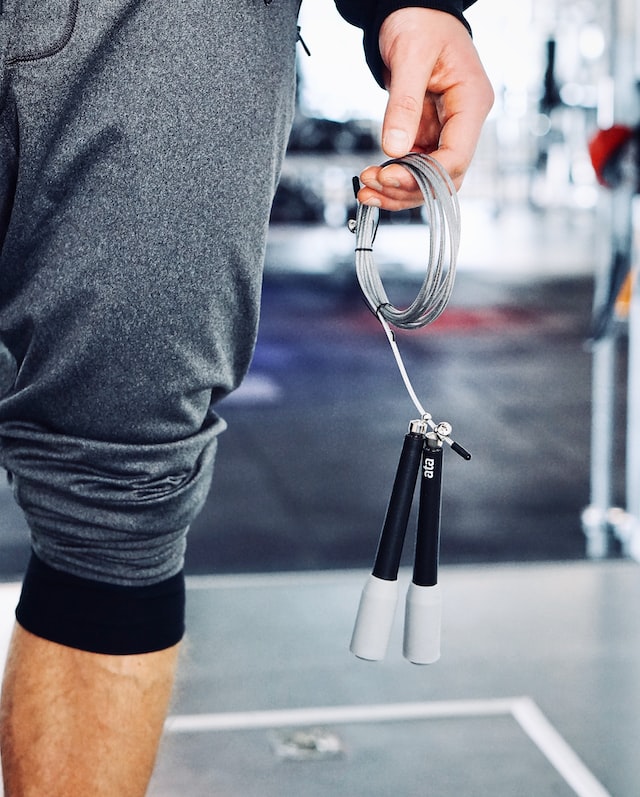When most people think of burning fat through exercise the first form of exercise that always comes to mind is cardio. It’s almost naturally assumed that a cardio workout will be the most efficient way to burn more fat. So is cardio really the best form of exercise for fat loss? What is the best form of cardio for fat loss? And how often should we be doing those cardio exercises for the most amount of fat loss? I’m going to answer all these questions in today’s post and I think you’re going to be really surprised with some of these answers.
Is Cardio the Most Effective Way to Burn Fat?

Believe it or not, cardio is not in any way shape, or form directly linked to burning fat. When you hop on the treadmill and do 30 minutes, 45 minutes, an hour, or even an hour and a half of cardio, it doesn’t at all guarantee that you’re going to burn any fat. In reality, cardio is linked to burning calories.
Just because you’re burning calories doesn’t mean that you’re burning fat. We need to create a calorie deficit to burn fat. Even after burning five hundred, six hundred, or even, lets say, a thousand calories during a cardio session we can easily eat enough additional calories later in the day and completely negate the effect of that cardio.
It Depends on Several Factors
Is cardio the best form of exercise for fat loss? The answer: It depends. If you add cardio to your existing workout, continue keeping your diet clean, and keep your calorie intake lower than what you are expending, then doing that additional cardio could definitely speed up your fat loss results.

If you run for half an hour to burn four hundred calories and then eat even one additional high-calorie snack sometime later in the day, you’ll probably end up taking those four hundred calories right back in, if not more. It would probably have been better for you to just not do that extra cardio and to skip out on all those extra calories.
Some people even believe they need to consume a pre-workout snack in order to be able to get through their cardio sessions. Many commercial protein bars have calorie levels as high as candy bars. You have to be very cautious and monitor your intake to be sure you are still maintaining a calorie deficit.
Cardio vs. Strength Training
Which is more effective for overall calorie burn, 30 minutes of jogging, or a 30-minute weight training circuit? The 30 minutes of running might burn more calories than a slow-paced weight training circuit, but lifting weights continues burning calories long after you’re done. Strength training stimulates muscle gain. Muscle is an active tissue that consumes calories in order to exist. The more muscle mass you have, the more calories your body consumes, even when at rest.
When comparing these two forms of exercise, which is more effective is whichever one will burn more overall net calories. Realistically, which one burns the most calories during the workout is of secondary importance.

Calories In, Calories Out
What really matters, and determines if you burn fat, is if you are able to create an overall calorie deficit. Cardio can be a tool to help create a larger calorie deficit, but it is important to remember that cardio workouts themselves will never directly burn fat without that deficit. It’s all about our total daily energy expenditure versus our total daily caloric intake.
Is All Cardio the Same?
The verdict is in. If incorporated into a proper exercise and eating program, cardio can certainly be a weapon in your arsenal to allow you to achieve your fitness goals. But which form of cardio is best? There are several things to consider when addressing that question:
- Does the cardio just burn calories during the workout or does it continue burning calories afterward?
- Does that form of cardio stimulate your hunger response and make you eat like crazy afterward or does it give you a chance to burn some extra calories without taking them right back in?
- How long are you able to do that specific cardio exercise before throwing in the towel and ending the workout?
- How long do you want to be doing cardio? Short sessions? Long sessions?
- How intense of a cardio workout can you handle?
Running vs. Walking vs. Jumping
Running will burn roughly 300 calories per half-hour while walking will burn 300 to 400 calories an hour. If you hate running to the point where you can’t stand doing it for longer than half an hour you might be better off just going out for an hour-long walk, especially if you enjoy it. Take your dog for a brisk walk, it counts as cardio.

Then there are also cardio workouts that burn a lot more calories, like jumping rope, which can burn up to a thousand calories an hour. If you do this for 15-20 minutes you’ll be able to burn roughly the same amount of calories that you burn in 30 minutes of running.
Added Benefits
Aside from the calories burned there are unique benefits to each form of cardio. Almost all forms of cardio will make you breathe heavier, helping you detoxify through your lungs. More active forms of cardio will make you perspire, which also assists in detoxifying your body.
Running will increase the endurance of your legs and running on inclines can be considered a resistance exercise. That helps build muscle which creates extended calorie burn. Rowing will help increase endurance in your upper body while swimming is a full-body workout. then you have high intensity interval training (HIIT) which cycles between aerobic and anaerobic activity and crams a lot of movement into a short period of time.
Some forms of HIIT use resistance circuits, allowing for the combination of cardio and strength training. This can be very effective, but if you can’t handle the intensity level of HIIT cycling, on real or stationary bike might be the best form of cardio for you.
The point is that there really isn’t one best form of cardio. They all work and you must find the one that works the best for you.
Non-Exercise Activity Thermogenesis (NEAT)

Consider all the people that stay in shape year-round in many foreign countries. They walk a lot and they don’t eat a lot. If you do a brisk walk for two hours you’re most likely going to be burning way more calories than running for half an hour or even 45 minutes. Many Europeans will walk rather than drive for shorter distances. Many utilize walking and public transportation. They get their cardio from daily activity rather than strictly from exercise. Calories burned in this manner fall into the category of non-exercise activity thermogenesis (NEAT). This is why people who have very physical jobs can stay so fit (if they can also control their calorie consumption).
No Short Cuts, No Magic Cures
To burn fat you don’t have to do cardio, but if you do decide to add cardio to give you a larger calorie deficit then you have to ask yourself a few questions. Which cardio workout can you do that will burn the most calories that you will actually enjoy doing? How much time do you have to commit to your cardio workout? If you have two hours then you could probably do a brisk walk. If you only have thirty minutes or 15 minutes, to get an effective cardio workout in you have to do a higher-intensity workout. Which form of cardio will you actually be able to stick to for the long haul and which one won’t adversely affect your diet? You can very easily eat those calories right back up and then some.
A Final Thought From DigEnet
Here is the takeaway. The cardio that is best for you is the cardio that you will actually do. Cardio exercises that you don’t like, even if they are some of the best from a technical standpoint, may not be for you. Some people are able to repetitively accomplish things they hate. They approach them like a job and are able to power through, maybe even learn to find the exercise tolerable. Do what works best for you and don’t forget to put as much thought into the calories in as you do the calories out.
